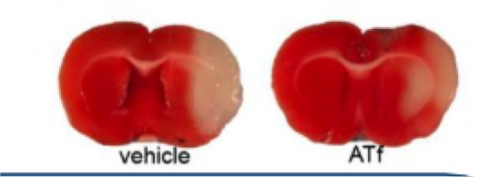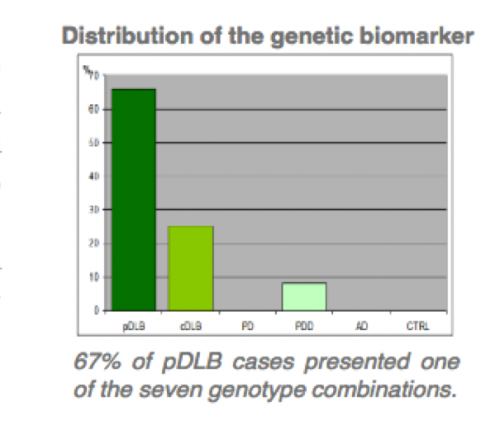Our group has demonstrated that intravenous administration of apotransferrin strongly reduces the brain damage (up to 75%) in 3 different rat models including both transient and permanent ischemic stroke and improves the neurological impairment (neuroscore 60%) induced by stroke. Thus, this new approach may benefit not only stroke patients who can be treated with current treatment to induce recanalization (transient stroke) but also the 80% of patients who could not benefit from current therapies directed to induce recanalization of the artery (permanent strokes).
Results in the preclinical area and some results obtained in serum of stroke patients lead us to think that apotransferrin is a good neuroprotector in the early stages of the ischemic event.
Description of the technology
The invention relates to the use of intravenous apotransferrin to prevent damage induced by permanent and also transient ischemic stroke. Moreover, we hold and International Patent Application (PCT) protecting the use of apotransferrin in brain stroke. Each year, 15 million new stroke cases occur worldwide (source: WHO). Despite the present knowledge of the pathophysiology of brain ischemic events, stroke remains as one of the leading causes of death and disability due to the lack of effective therapies. Current stroke treatments are based on thrombus removal and these can be only prescribed in less than 20 % of stroke patients. Therefore, stroke therapy remains a dire need, and the development of successful therapeutic strategies represent an opportunity.
Specifications
The mechanism involved in protection by apotransferrin is diferent from those previously targeted in stroke and it is not dependent on the blockade of the NMDA receptor or on direct free radical scavenging. Our group found that apotransferrin prevents the import by neurons of the prooxidant iron-loaded-transferrin in excitotoxic conditions. By doing so, apotransferrin prevents the burst of free radical production inside the neuron rather than acting as a classic antioxidant molecule that scavenges or removes free radicals once produced.
Main advantages of its use
- - Apotransferrin administration is also BENEFICIAL IN THE ABSENCE OF REPERFUSION or restoration of the blood flow. It provides an OPTION FOR PATIENTS that are not to be treated with current strategies directed to recanalization of the artery occluded.
- - Apotransferrin can be ADMINISTERED AT THE SAME TIME THAT thrombolytic agent and/or during surgical intervention to remove the thrombus.
- - Apotransferrin has been used for the treatment of patients on myeloablative therapy, SHOWING GOOD SAFETY AND TOLERABILITY DATA. Apotransferrin might be potentially used in both ischemic and haemorrhagic stroke.
- - Apotransferrin is an ENDOGENOUS PROTEIN used AT PHYSIOLOGICAL LEVELS TO TREAT STROKE; this minimizes the risk of generating adverse reactions.
- - IDENTIFIED MECHANISM OF ACTION. Apotransferrin prevents the import by neurons of the prooxidant molecule iron-loaded-transferrin during ischemia; this prevents ischemia-induced neuronal death.
Applications
- Central Nervous System (CNS)
Additional information (attached documents)
Technology Offer_Apotransferrin to treat Stroke



